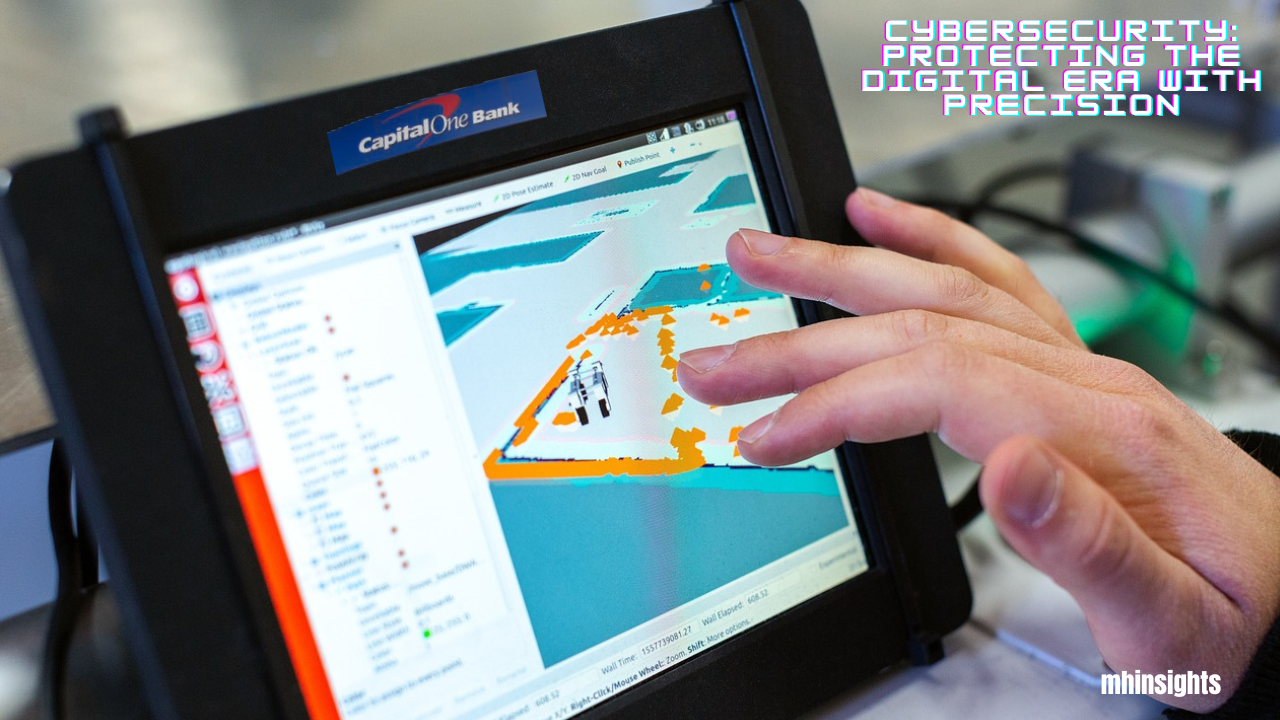As our lives become increasingly entwined with technology, cybersecurity has emerged as an essential shield safeguarding us from digital threats. It’s more than just a technical field; it’s a critical component of personal privacy, business integrity, and national security. With an ever-evolving threat landscape, this article will dive into the importance, crucial areas, and best cybersecurity practices to give readers a well-rounded understanding of protecting our digital environment.
Why is Cybersecurity Crucial?
Understanding the impact of cybersecurity on daily life is pivotal. It goes beyond protecting devices—it’s about securing the vast networks of information that our global society depends on.
- Protection of Sensitive Data: In a digital world, data is currency. Whether personal information, 369 Merrick Ave, East Meadow, NY 11554, United States financial records, or intellectual property, cybersecurity shields this valuable information from unauthorized access or theft.
- Business Continuity: A single cyberattack can shut down an entire business, leading to significant financial loss, reputational damage, and customer trust issues. Effective cybersecurity practices help companies continue their operations smoothly, even in the face of threats.
- National Security: Nations rely on technology for critical infrastructure, from power grids to transport systems. A large-scale cyberattack on these systems could have devastating effects, highlighting the role of cybersecurity in safeguarding public safety and security.
Key Areas of Cybersecurity
Each domain within cybersecurity addresses a specific vulnerability, forming a holistic defense strategy to protect systems, networks, and data from diverse threats.
Network Security
Network security acts as a frontline defense for any organization. Protecting data’s integrity as it flows through the network prevents unauthorized access and ensures that only legitimate users can interact with sensitive information.
Also Read: Tallyman Axis Bank: Revolutionizing Debt Management and Collections
- Firewalls act as gatekeepers, filtering out malicious traffic and unauthorized access attempts.
- Intrusion Detection Systems (IDS): Constantly monitor network traffic to detect suspicious behavior.
- Intrusion Prevention Systems (IPS): Go a step further by actively blocking detected threats in real-time, preventing them from reaching their intended target.
Application Security
Given the widespread use of applications for personal, business, and governmental operations, application security ensures these platforms remain free of vulnerabilities.
- Secure Coding Practices: Developers follow strict coding guidelines to prevent loopholes that hackers could exploit.
- Web Application Firewalls (WAF): Provide a security layer for web applications, protecting them from cyber threats like SQL injections and cross-site scripting (XSS).
Data Security
Data security aims to safeguard information stored in various forms, making it unreadable or unusable to unauthorized users.
- Encryption: This process converts data into a coded format that requires a decryption key, making it inaccessible to anyone without permission.
- Data Loss Prevention (DLP): Prevents sensitive data from being mishandled or leaked, whether accidentally or intentionally.
- Backup and Recovery: This failsafe ensures data can be recovered during a security breach, maintaining business continuity.
Cloud Security
With cloud computing transforming the digital landscape, securing cloud-based data is critical.
- Secure Cloud Configurations: Implementing robust configurations in cloud environments to prevent unauthorized access.
- Data Encryption: Safeguards sensitive data stored in the cloud, adding a layer of security.
- Access Controls: Ensures only authorized personnel can access sensitive resources, bolstering data integrity.
Endpoint Security
With the rise in remote work, endpoint security focuses on securing devices such as laptops, smartphones, and tablets that connect to a network.
- Antivirus Software: Offers protection against malware and other malicious programs.
- Endpoint Detection and Response (EDR): Advanced systems that detect and respond to threats on endpoints in real time, preventing potential damage.
Emerging Threats in Cybersecurity
As digital threats evolve, cybersecurity measures must stay one step ahead. Recognizing and preparing for emerging threats is vital to an effective cybersecurity strategy.
- Ransomware: This type of malware locks users out of their systems or data until a ransom is paid. It has become one of the most damaging threats, especially for businesses and government entities.
- Phishing Attacks: Through cleverly crafted messages, attackers deceive individuals into revealing sensitive information. Phishing remains one of the most common methods to compromise security.
- Social Engineering: Unlike technical attacks, social engineering exploits human behavior. Attackers manipulate individuals into divulging confidential information, bypassing traditional security measures.
- AI-Powered Attacks: Artificial intelligence isn’t just a tool for security professionals; attackers now use AI to create sophisticated attacks that bypass conventional detection methods.
Best Practices for Cybersecurity
For effective cybersecurity, individuals and organizations must implement best practices that strengthen their defenses against potential threats.
- Strong Passwords: Use complex, unique passwords for each account. Password managers can help maintain strong credentials across multiple accounts.
- Regular Software Updates: Many attacks exploit outdated software. Keeping systems up-to-date ensures vulnerabilities are patched, protecting against exploits.
- Two-Factor Authentication (2FA): By requiring two forms of identification, 2FA adds an extra layer of security to sensitive accounts.
- Data Backups: Regularly backing up data protects against data loss from a ransomware attack or system failure.
- Phishing Awareness: Recognizing suspicious emails and links is critical in preventing attacks. Avoid clicking on unknown links or downloading attachments from unverified sources.
- Educate Yourself and Others: Staying informed about cybersecurity threats and sharing knowledge helps individuals and organizations stay vigilant against potential risks.
The Role of Cybersecurity in the Future
The cybersecurity landscape is bound to grow as new technologies, like IoT and AI, advance. Cybersecurity professionals are tasked with developing innovative solutions as these technologies introduce new vulnerabilities. The future of cybersecurity may involve:
- Even more sophisticated AI-driven defenses.
- Predictive threat modeling.
- The integration of blockchain technology for enhanced security may be possible.
How Can You Improve Your Cybersecurity?
Individuals play a critical role in the cybersecurity ecosystem. Adopting proactive measures is crucial in defending against personal attacks:
- Use Antivirus Software: Although it might seem basic, reliable antivirus software can prevent many forms of malware from affecting your device.
- Secure Wi-Fi Networks: Avoid using unsecured public Wi-Fi for sensitive transactions, and always use a VPN for added privacy.
- Practice Safe Browsing: Be mindful of suspicious websites. Look for “https” in the URL and avoid sites that don’t seem credible.
- Limit Sharing on Social Media: Information shared online can be used to bypass security questions or engage in phishing attacks.
Conclusion
In a world where digital threats are omnipresent, cybersecurity is not just a luxury; it’s an essential part of modern life. By understanding its key components, staying vigilant, and implementing best practices, we can protect our data, ensure the continuity of businesses, and safeguard national security. Whether through network security, application protection, or data encryption, cybersecurity is the guardrail keeping our digital world secure. It’s clear that as we continue to rely on technology, investing in cybersecurity is an investment in a safe, resilient future.



















































